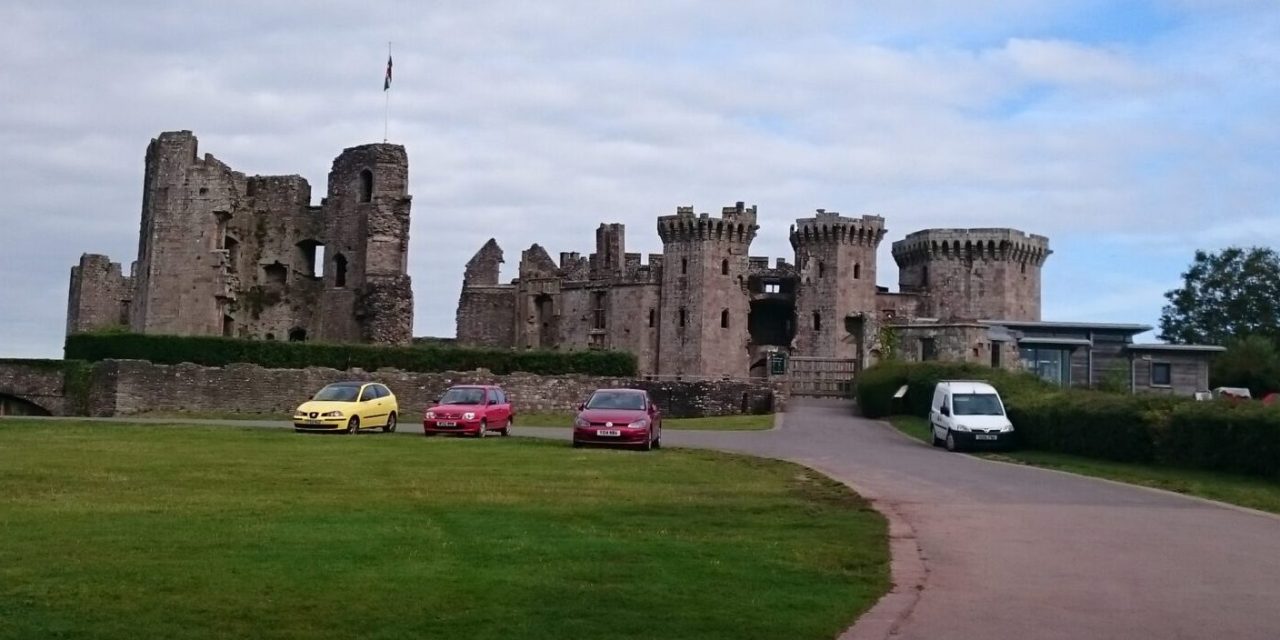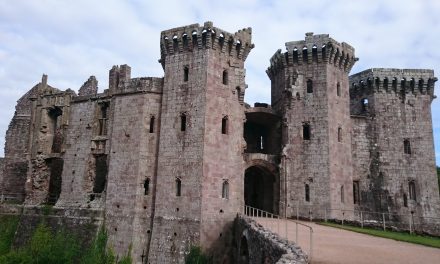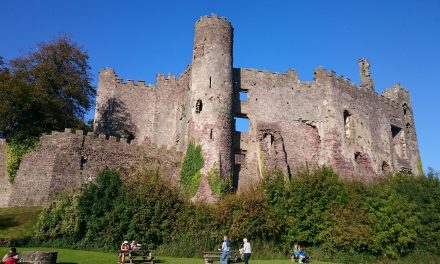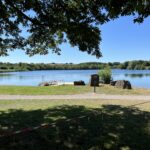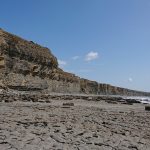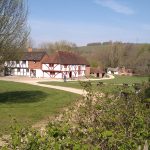Wales is a beautiful place that is home to many amazing castles that can teach you about the history of the country. Whether you are super knowledgeable about the castles that are in Wales, or you have yet to learn anything at all, this is a great place to find out lots of facts and information about the castles that Wales is home to. Hopefully, you will be able to learn some things that you didn’t know before.
There are so many things to see and do in Wales, and the castles are probably one of the most valuable places to visit to learn more about our history. They can be located all over the country, and it would take you a very long time to make your way through visiting them all. You could make it your mission to see the beauty of all of these castles, but if you live in or are visiting Wales, you should definitely spare some time to see some of them.
What to expect from our article
- 1 How Many Castles Are There in Wales?
- 2 What is the Most Famous Castle in Wales?
- 3 Does Wales Have the Most Castles in the World?
- 4 What is the Oldest Castle in Wales?
- 5 Who Built the First Castle in Wales?
- 6 Which is the Biggest Castle in Wales?
- 7 Why Has Wales got So Many Castles?
- 8 What is the Most Expensive Castle in Wales?
- 9 How Many Castles Are There in Carmarthenshire?
- 10 How Many Castles Are in Bridgend?
- 11 How Many Castles Are There in Gwynedd?
- 12 What is the Most Visited Castle in Wales?
- 13 How Many Castles Did Edward I Build in Wales?
- 14 What Was the Biggest Castle Built by William the Conqueror?
- 15 Can You Stay in Castles in Wales?
How Many Castles Are There in Wales?
Amazingly, there are a staggering 600 castles in Wales, which is more per square mile than anywhere else in the world. How amazing is that? Some of these castles have been lived in for a very long time of over a thousand years, and others are ruins that can still be visited. Many of the castles in Wales were built by the Welsh themselves, and others were built by the Normans after they invaded in 1066. You could easily spend a lifetime visiting all of the castles that Wales has to offer, and lots of them are in truly stunning locations.
What is the Most Famous Castle in Wales?
It is difficult to decide which is the most famous castle in Wales due to the fact that there are so many amazing choices. Instead, here is a list of some of the most famous castles that Wales has to offer:
- Raglan Castle
- Conwy Castle
- Caldicot Castle
- Caerphilly Castle
Due to the amount of conflict that has arisen during the past between England and Wales, it isn’t surprising that there are so many castles there.
Does Wales Have the Most Castles in the World?
The answer to this question is a simple one. Yes, Wales does have the highest number of castles than any other country. It is said that a long time ago, there was a castle in every 12 square miles. With so many castles to choose from, it can be difficult to decide which ones to visit.
What is the Oldest Castle in Wales?
It is inconclusive which of the castles in Wales is the oldest, but Chepstow castle, located in Monmouthshire, is known to be the oldest surviving post-Roman stone castle in the entirety of Britain. They started building this castle in 1067 under the command of a Norman Lord who was named William FitzOzbern. Originally, this castle had a different name, which was Striguil, but it now goes by the name of Chepstow Castle.
In the 12th century, the castle was used in the conquest of Gwent, which was the first of the Welsh kingdoms to be captured by the Normans. William Marshal and Richard de Clare, two of the most important Anglo-Norman magnates of their time in England, held this castle. By the 16th century, the military value of this castle was not as high as it once was, and parts of the castle were converted into domestic ranges. Unfortunately, by the 1700s, it had fallen into complete decay. The castle was later saved by the growth of tourism, where it became a popular place to visit.
Who Built the First Castle in Wales?
As we briefly mentioned earlier, one of the earliest built castles that we know of is Chepstow castle, which was built by William FitzOsbern. The building of this castle started in 1067. William FitOsbern was the Lord of Breteuil in Normandy and was also a relative and close councillor of William the Conqueror.
He was a magnate of early Norman England, and he was one of the few proven companions of William the Conqueror that is known to have fought at the Battle of Hastings in 1066. He resided in Carisbrooke Castle on the Isle of Wight, which is actually one of the English castles that he had a hand in building.
When the Normans took control over England and Wales, FitxOsbern was one of the major castle builders. Some castles that are known to attribute him are Carisbrooke Castle on the Isle of Wight, Chepstow Castle in South Wales, Wigmore and Clifford Castle in Herefordshire, Berkeley Castle in Gloucestershire, and Monmouth Castle in Wales.
Which is the Biggest Castle in Wales?
The largest castle in Wales and the second largest in Britain is Caerphilly Castle. Gilbert de Clare constructed Caerphilly Castle in the thirteenth century as part of his plan to maintain control over Glamorgan. This castle witnessed many battles and is surrounded by artificial lakes that are known to be the most elaborate water defences to be created in Britain.
This castle covers a lot of ground and occupies around 30 acres, and is famous for introducing castle defences to Britain. Work started on this castle in 1268 after the occupation of North Glamorgan, and construction lasted for a further three years.
It would have cost a lot of money to build this castle due to how elaborate it is, and not everybody was happy with the build. Due to this, the site was burnt in 1770 to then be taken over by royal officials in 1271. Despite all of this trouble, Gilbert was still able to complete the castle in all of its glory and proceeded to take control of the region.
The castle was attacked three times; once during the Madog ap Llywelyn revolt of 1294, and once during the Llywelyn Bren uprising in 1316, and again during the overthrow of Edward II in 1326-27. Sadly, the castle fell into decline by the late 15th century, and by the 16th century, the surrounding water defences, altogether had been drained, and the walls were robbed of their stones. The property was acquired in 1776, and restoration work began to bring the castle back to life. In 1950, the water defences were re-flooded, and today, Caerphilly Castle has become a major tourist destination.
Why Has Wales got So Many Castles?
Throughout history, there have been many reasons why the Welsh or Welsh invaders have had to build castles in Wales. When you consider the 350 years of conflict that Wales had with England, it becomes much more apparent why so many castles were built there.
Before the idea of castles had even come around, Welsh land made the perfect place to build castles. There are so many mountains and valleys that could be used to their advantage, and there was a vast supply of water from rivers and seas. Wales is full of natural tactical advantages when it comes to battle tactics. Lots of Norman castles were actually built on Welsh fortress sites as they were naturally strategic points that made it much easier to control the surrounding land.
While the estimated number of castles in Wales is 600, there would have been more than this at one place in time. An older example of castles is the famous ring of stone and iron that was created by Edward I. These castles were built to help concentrate his power after he was able to defeat Llywelyn ap Gruffudd in 1282. The ring of castles includes Beaumaris, Caernarfon, Conwy, Criccieth, Harlech and Flint castles.
Conflicts between Norman barons are another reason why even more castles were erected, not just because of Wales’s conflicts with England. It is known that Anglo-Norman lords fought each other just as much as the English for around 200 years. This added conflict led to more castles being built.
Owain Glyndwr’s uprising against England between 1400 and 1415 led to two castles playing a key role in the success of his campaign. This made it even more plausible to think that Welsh castles are an important factor when it comes to Wales battling against England. The revolt led to the capture of Conwy Castle in 1401 and Harlech Castle in 1404. However, a few years later the rebellion was weakening, and by 1415 it was over with altogether.
During the fifteenth century is when one of the last propper castles was built in Wales. This was Raglan castle, which was intended to be a fortified residence when it was built. Interestingly, it saw military action later on during the English Civil War.
The seventeenth century was the end of castles playing a large role in the conflict. New weaponry like gunpowder and cannons emerged, which made castle walls seem much less superior in a battle as they were easier to take down. Castles couldn’t compete with modern weaponry, and there were many castle sieges where castles were taken by parliament.
With their surrender came new orders, and many castles were ordered to be destroyed beyond further use. They blew up lots of castles, making them impossible to defend and use. As they were no longer being used, the castles were left to rot, and many collapsed in parts.
A long time after castles were used in conflicts, they actually started to gain attraction from tourists. A number of existing castles were upgraded so that they were safe for visitors, and financial aid from tourists made it possible to do so. Cardiff Castle was restored by the Bute family before being given to the City of Cardiff. This is the castle that we can see today. Lots of the castles that would have been lost were able to be saved due to tourism.
What is the Most Expensive Castle in Wales?
Between 1284 and 1330, between £20,000 and £25,000 was spent on Caernarfon’s castle and town walls. At the time that it was built, this was an enormous sum of money, and it is much more than some of the most expensive and impressive castles in England. There were no major additions to the castle after this time period, and most of the remains of the castle are from the Edwardian period.
Even though such a large amount of money was spent on building this castle, lots of planning was actually never finished. The rears of the King’s gate and the Queen’s gate were left unfinished and the foundations of the castle’s interior show where buildings would have been if the work had been completed.
How Many Castles Are There in Carmarthenshire?
There are quite a few castles in Carmarthenshire that are waiting to be explored, and they are spread across the entire county. It is a more rural area than some other places that have castles, but it does also have a coastline that has some castles along it. In total, there are 12 main castles in Carmarthenshire. There are also some interesting structures to see here like Paxton’s Tower, which was erected in honour of Lord Nelson roughly 200 years ago.
The twelve castles that you can find in Carmarthenshire are Banc y Betws, Carmarthen, Carreg Cennen, Dinefwr, Dryslwyn, Kidwelly, Laugharne, Llandovery, Llansteffan, Moel, Newcastle Emlyn, and Rhyd-y-gors.
How Many Castles Are in Bridgend?
There are roughly 6 castles in Bridgend, but the most popular of which is Newcastle, which is located at the top of a hill that overlooks the town of Bridgend. Originally it was placed to watch over the crossing point of the Ogmore River, and alongside two other castles, Coity and Ogmore-by-Sea, they made up the Norman defensive Ogmore Triangle. This system was created to guard the Ogmore river and was designed in a way that meant if any of the castles came to be under an attack, a signal could be seen from the nearby castles that would send reinforcements.
Newcastle was originally established as an earthen work castle by Robert Fitzhamon, the Earl of Gloucester and famous Norman Lord. The stone castle was likely built later by Earl William who held the castle in 1183 when ownership was claimed by Henry II. Earl William died in 1183 before the Welsh uprising that made Henry II retain ownership of Glamorgan until he died in 1189. Many fought to recover the land over time, and some were successful, resulting in a change of ownership. You can still see the remains of this castle today.
How Many Castles Are There in Gwynedd?
There are four groups of castles and town walls of King Edward in Gwynedd of the late thirteenth century and early fourteenth-century military fortifications. They were built and rebuilt by the English King Edward I when he expanded his ownership into north-west Wales in 1283. He wanted to build an Iron Ring of castles and new towns so that he could house new English settlers. They were all built by a man called James de Saint George, who was the king’s chief architect in Wales.
The structures that are included in these builds are:
- Harlech Castle (1283) – This is a concentric castle that was built on top of a cliff that was close to the Irish Sea.
- Castle of Beaumaris (1295) – Construction of this castle started in 1295 but was never able to be finished due to a shortage of money and resources. This was the last and largest of the castles to be built by King Edward, and it is also a concentric castle.
- The coastal town of Caernarfon (from 1283) – This town has a deliberate link with Caernarfon’s Roman past, and with banded coloured stone, the castle’s walls are reminiscent of the Walls of Constantinople.
- Castle and town walls of Conwy (1283-1289) – This is not a concentric built castle because of its strategic position on a rock. However, it still has a full circuit of town walls.
What is the Most Visited Castle in Wales?
Caernarfon Castle is a castle that is located in North West Wales and is the most popular castle in Wales. It has over 310,000 visitors a year and was created by Edward I, becoming one of the most impressive castles with beautiful scenery.
It was originally a Motte and Bailey castle from the late eleventh century until King Edward replaced it with a more current stone structure in 1283. The castle was an administrative centre in North Wales, and so the defences had to be built on an epic scale. It was deliberately linked with Caernarfon’s Roman past, and the Roman fort of Segontium is nearby.
How Many Castles Did Edward I Build in Wales?
A name that commonly pops up when in search of castles in Wales is Edward I. While there are hundreds of castles in Wales, eight of them were built by Edward I, and some of them are the most famous of them all. For those who don’t know, Edward I was an English king that conquered Wales, and he lived between 1272 and 1307.
The first of his Welsh castles was a reconstruction that he worked on at Builth Castle, which had been destroyed by Llywelyn in 1260. He worked on another three castles that began construction in 1277, which were Aberystwyth, Flint, and Rhuddlan Castles.
These were all brand new builds that were started from scratch. They were designed using the more modern concentric style, and each wall became its own defensive barrier against all threats. It would take a lot of work and effort to overcome these castles for any that may have tried.
All three of these castles also had direct access to the sea, and with England controlling the sea lanes, it made it easy to get supplies and reinforcements brought in.
By 1277, Llywelyn had surrendered to Edward, which meant that his grounds were mostly left untouched. A storm broke out in 1282 that forced Edward into another campaign, and after all his castles were attacked, only one fell, which was Aberystwyth. This proved where his strengths were.
Llywelyn was killed in December 1282, and so the defences of Snowdonia were breached, and Edward’s forces crossed the Conwy and Anglesey using boats. Not long after this event occurred, the king himself and Master James began working on three new castles. These became known as the iron necklace of castles, and they were built in an attempt to cease the independence of Snowdonia. These castles were called Conwy, Caernarfon, and Harlech Castles.
Many thousands of people were employed at these three locations, and forces were drawn from all over England. They had masses of resources, including iron, steel, timber, lead, and rope from other allied locations. Their plan to overrule worked efficiently and they eradicated any native nobility of Wales. The castles served as English administrative, financial and judicial control bases.
The Welsh resistance pushed on, but the revolt didn’t have any well-established leaders, and the English castles gave them control of the most strategic points in Wales. By the spring of 1295, the revolt was in shambles, and Edward chose Anglesey as the new location of his last castle to be built in Wales. This castle was called Beaumaris Castle, and it can be witnessed as Master James’ best work. However, this castle was never fully finished and soon fell into disrepair.
The amount of money that it had cost for Edward I to build all of these castles isn’t known exactly, but it is estimated to be at around 30 million pounds in modern money, which is a very large amount of money. Eventually, these high costs led to financial troubles in his later years in life, which led to disorder in England and ruined his ambitions for Scotland and France.
What Was the Biggest Castle Built by William the Conqueror?
William the Conqueror started to put his soldiers into stone castles as soon as he arrived. This was his way of displaying his power and that he was in charge. The biggest Castle that William the Conqueror had a hand in building was Windsor Castle.
Can You Stay in Castles in Wales?
Yes, there are actually some castles in Wales that you can stay in. Each of these castles has their own history, and it would be really cool to stay in one of them overnight and gain a real perspective while learning all about the place. Some of the castles in Wales that you can stay in are:
- Brecon Castle
- Craig-y-Nos Castle
- Castell Deudraeth
- Plas Rhianfa
- Cardigan Castle
- Roch Castle

